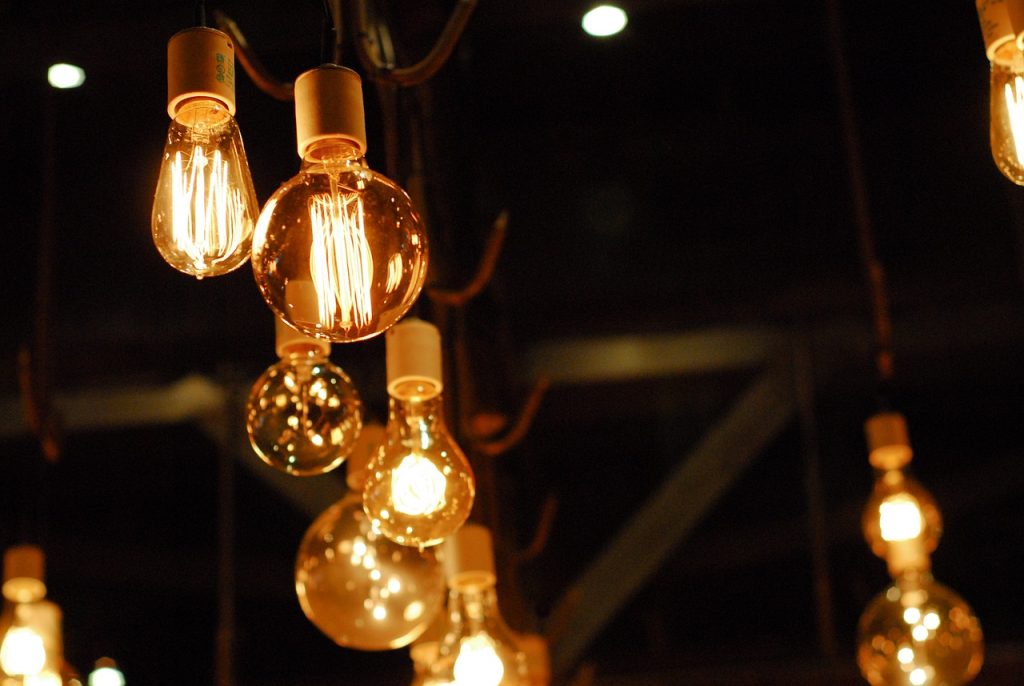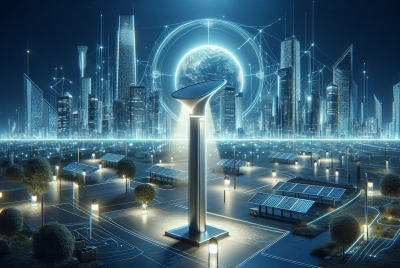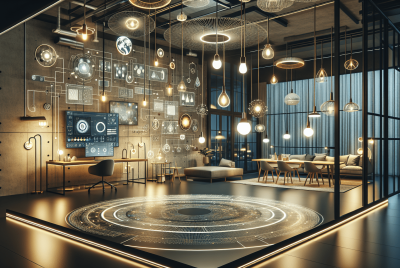Illuminating Your Space: Discover the Latest in Home Lighting Technology
Are you ready to shed some light on your space? Look no further than the latest advancements in home lighting technology. From energy-efficient LED bulbs to smart lighting systems that can be controlled from your smartphone, these innovations are transforming the way we brighten up our homes. In this article, we’ll explore the exciting features and benefits of these cutting-edge lighting solutions, helping you find the perfect illumination for every corner of your space. Say goodbye to dim rooms and hello to a brighter, more efficient future with the latest in home lighting technology.

Section 1: Introduction to Home Lighting Technology
What is Home Lighting Technology?
Home lighting technology refers to the various advancements and innovations in lighting systems designed specifically for residential use. It encompasses the different types of light bulbs, fixtures, and control systems that have emerged in recent years to enhance the lighting experience in homes. From traditional incandescent bulbs to smart lighting systems, these technologies have revolutionized how we illuminate our spaces, offering greater energy efficiency, convenience, and customization options.
Importance of Home Lighting Technology
Home lighting technology plays a crucial role in creating a comfortable and inviting atmosphere within our living spaces. It not only provides illumination for daily tasks and activities but also influences our mood and overall well-being. The right lighting can enhance the aesthetics of our homes, highlight architectural features, and even promote relaxation or productivity, depending on our needs. Additionally, with the rising concern for energy efficiency and sustainability, home lighting technology offers significant benefits in reducing energy consumption and lowering utility bills.
Section 2: Types of Home Lighting Technologies
2.1 Incandescent Lighting
Incandescent lighting is the traditional and most common type of home lighting technology. These bulbs produce light through a filament that is heated by an electric current until it emits visible light. While incandescent bulbs are inexpensive and readily available, they are less energy-efficient compared to newer technologies and have a shorter lifespan. They also emit a warm, yellowish light that may not be suitable for certain spaces or tasks.
2.2 Compact Fluorescent Lamps (CFLs)
Compact Fluorescent Lamps, commonly known as CFLs, are energy-efficient alternatives to incandescent bulbs. By using an electric current to excite a mixture of gases inside the lamp, these bulbs produce ultraviolet light that is then converted into visible light by a phosphor coating on the bulb’s surface. CFLs last longer and consume significantly less energy than incandescent bulbs, making them an eco-friendly lighting choice. However, they may take some time to reach full brightness and may not be compatible with certain fixtures.
2.3 Light Emitting Diodes (LEDs)
LEDs have gained immense popularity in recent years due to their exceptional energy efficiency, long lifespan, and versatile lighting options. These bulbs use a semiconductor chip to convert electrical energy into light, resulting in minimal heat generation and maximum energy efficiency. LEDs are available in various colors, dimmable options, and can be used for both general and task lighting. While they may have a higher initial cost, their longevity and energy savings make them a worthwhile investment.
2.4 Halogen Lighting
Halogen lighting is a type of incandescent lighting that uses halogen gas in the bulb to increase its efficiency and lifespan. Halogen bulbs produce bright, white light and are commonly used in track lighting and recessed fixtures. They provide excellent color rendering, making them suitable for accent lighting and showcasing artwork or decorative features. However, they are less energy-efficient compared to CFLs and LEDs and emit a significant amount of heat, requiring caution when handling.
2.5 Smart Lighting Systems
Smart lighting systems are revolutionizing home lighting technology by offering advanced control and customization options. These systems connect wirelessly to a network, allowing you to control and automate your home’s lighting using a smartphone app or voice commands. With smart lighting, you can dim or change the color of lights, set schedules, and even integrate them with other smart home devices for added convenience. Smart lighting systems often utilize LED bulbs for their energy efficiency and versatility.
Section 3: Energy Efficiency and Cost-saving Features
3.1 Energy Efficiency of LED Lights
LED lights are widely recognized for their exceptional energy efficiency. Compared to incandescent bulbs, LEDs consume significantly less electricity while providing the same level of brightness. On average, LEDs use 75-80% less energy, translating into substantial energy savings over time. This increased efficiency not only reduces your carbon footprint but also helps you save on your energy bills, making LED lighting a cost-effective choice in the long run.
3.2 Comparison of Energy Consumption
When comparing different types of home lighting technologies, LED lights clearly stand out in terms of energy consumption. Incandescent bulbs waste a considerable amount of energy by converting most of it into heat rather than light. CFLs are more efficient than incandescent bulbs but still fall short of LED’s efficiency. With their minimal energy usage, longer lifespan, and reduced environmental impact, LED lights are the top choice for energy-conscious homeowners.
3.3 Impact on Energy Bills
By switching to energy-efficient lighting technologies, such as LEDs, homeowners can experience significant savings on their energy bills. LED lights’ lower energy consumption not only reduces your electricity usage but also decreases the strain on your cooling systems, as they produce less heat compared to traditional bulbs. Furthermore, the longer lifespan of LED lights means fewer replacements and less frequent purchases, further contributing to cost savings in the long term.
Section 4: Enhancing Home Lighting Ambiance
4.1 Dimmable Lighting
Dimmable lighting offers the flexibility to adjust the brightness levels of your lights according to your needs and preferences. With dimmers, you can create different atmospheres and moods, whether it’s bright and vibrant for social gatherings or soft and cozy for a relaxing evening at home. Dimmable LED bulbs are a popular choice as they provide smooth and precise dimming capabilities, allowing you to achieve the desired ambiance with ease.
4.2 Color Temperature and Mood Lighting
Color temperature refers to the appearance of light, ranging from warm (yellowish) to cool (bluish-white) tones. By selecting lights with different color temperatures, you can create different moods and enhance specific areas of your home. Warm white lights are ideal for creating a cozy and inviting atmosphere in living spaces, while cool white lights are perfect for task-oriented areas like kitchens and home offices. Adjustable LED bulbs allow you to customize the color temperature according to your preference, offering endless possibilities for creating the perfect ambiance.

Section 5: Automated and Smart Lighting Systems
5.1 Voice-Activated Lighting Control
Smart lighting systems offer the convenience of voice-activated control, allowing you to effortlessly operate your lights using voice commands. Integration with virtual assistants, such as Amazon Alexa or Google Assistant, enables hands-free control over the lighting in your home. Whether you want to turn lights on or off, adjust brightness levels, or change colors, voice-activated lighting control adds a new level of ease and accessibility to your living space.
5.2 Motion Sensor Lighting
Motion sensor lighting provides an automated solution for illuminating your space based on occupancy. By installing motion sensors in key areas, such as hallways or bathrooms, lights can automatically turn on when someone enters the room and turn off when no motion is detected. This not only enhances convenience but also contributes to energy savings by ensuring lights are only active when necessary. LED bulbs are an ideal choice for motion sensor lighting due to their instant-on capability and long lifespan.
5.3 Programmable Timers and Scheduling
Smart lighting systems often come equipped with programmable timers and scheduling options, allowing you to automate lighting routines according to your daily activities. You can set lights to turn on or off at specific times, simulate occupancy when you’re away from home, or gradually dim lights for a peaceful bedtime routine. With the ability to customize lighting schedules, you can enhance security, save energy, and simplify your daily routines.
Section 6: Creative and Decorative Lighting Solutions
6.1 Artistic Light Fixtures and Chandeliers
Artistic light fixtures and chandeliers serve both functional and decorative purposes, adding a touch of style and elegance to your home. From contemporary pendant lights to ornate crystal chandeliers, there are countless options available to suit various interior design styles. These creative lighting solutions not only provide ample illumination but also become focal points themselves, enhancing the visual appeal and ambiance of your living spaces.
6.2 Task Lighting for Specific Purposes
Task lighting is designed to provide focused illumination for specific activities, such as reading, cooking, or working at a desk. Adjustable desk lamps, under-cabinet lights, and track lighting are some examples of task lighting solutions that offer targeted brightness and minimize eyestrain. By incorporating task lighting into your home, you can enhance visibility, improve productivity, and create functional areas tailored to your specific needs.
6.3 Accent Lighting for Highlighting Features
Accent lighting is a great way to highlight architectural features, artwork, or decorative elements in your home. Whether through track lighting, spotlights, or wall-mounted fixtures, accent lighting draws attention to specific areas, adding depth and visual interest to your space. LED lights are particularly suitable for accent lighting due to their directional capabilities and ability to create focused beams of light. With accent lighting, you can transform your home into an art gallery or showcase the beauty of architectural details.

Section 7: Integration with Smart Home Devices
7.1 Connection with Virtual Assistants
Home lighting technology can seamlessly integrate with virtual assistants, such as Amazon Alexa or Google Assistant, to create a fully connected and voice-controlled living environment. By connecting your smart lighting system to these virtual assistants, you can control your lights using voice commands, create custom lighting scenes, and even synchronize lighting with other smart home devices. This integration adds convenience, flexibility, and a futuristic touch to your home lighting experience.
7.2 Compatibility with Home Automation Systems
Home automation systems offer comprehensive control over various aspects of your home, including lighting. With compatible home automation systems, you can integrate your smart lighting system into a centralized platform for complete control and customization. From setting up automated routines to syncing lighting with other home appliances, the compatibility between home automation and smart lighting systems allows for a more streamlined and cohesive smart home experience.
Section 8: Outdoor Lighting Innovations
8.1 Security Lighting Options
Outdoor lighting serves multiple purposes, including enhancing safety and security around your property. Motion-activated security lights can deter potential intruders and provide visibility in dimly lit areas. With LED technology, outdoor security lighting is more energy-efficient, long-lasting, and reliable than ever before. Additionally, smart outdoor lighting systems allow you to remotely control and monitor your outdoor lights, providing an added layer of security and peace of mind.
8.2 Landscape and Garden Lighting
Landscape and garden lighting help showcase the beauty of your outdoor spaces while providing practical illumination. Pathway lights, uplights, and string lights are popular options to enhance the aesthetics and functionality of gardens, patios, and walkways. LED landscape lighting offers energy efficiency, durability, and the ability to accentuate specific features in your landscaping. With well-planned and properly installed outdoor lighting, you can create a welcoming and visually stunning outdoor environment.
Section 9: Overcoming Challenges and Considerations
9.1 Flickering and Glare Issues
While home lighting technology has made significant advancements, certain challenges still exist. Flickering and glare are common issues that can impact the overall lighting experience. Flickering can be caused by incompatible dimmer switches or poorly designed LED bulbs, while excessive glare may result from improper positioning of lights or using bulbs with high lumen output in sensitive areas. To overcome these challenges, it is crucial to choose quality lighting products, follow proper installation guidelines, and consult with lighting professionals if necessary.
9.2 Compatibility with Existing Fixtures
When upgrading to newer lighting technologies, compatibility with existing fixtures is an important consideration. Certain bulbs, such as LEDs or CFLs, may have different base sizes or shapes compared to traditional incandescent bulbs. Fortunately, most lighting manufacturers provide compatibility information, ensuring that you can find suitable replacements or retrofit options for your existing fixtures. It is advisable to check compatibility before making a purchase or consult with lighting experts for guidance.
9.3 Lifespan and Maintenance
One of the key advantages of modern home lighting technologies is their extended lifespan compared to traditional bulbs. LED lights, in particular, can last up to 25,000 hours or more, significantly reducing the need for frequent bulb replacements. However, regular maintenance is still necessary to ensure optimum performance and longevity. Cleaning fixtures, replacing failed bulbs promptly, and checking connections periodically are essential maintenance practices to keep your home lighting system in top condition.
Section 10: Future Trends in Home Lighting Technology
10.1 Wireless Charging Lightbulbs
As technology continues to evolve, wireless charging lightbulbs are emerging as a potential future trend in home lighting. These innovative bulbs integrate wireless charging capabilities, allowing you to conveniently charge compatible devices by simply placing them near the light source. Wireless charging lightbulbs eliminate the need for additional charging cables and adapters, offering a clutter-free and seamless charging experience.
10.2 Circadian Lighting for Health and Wellbeing
Circadian lighting aims to mimic the natural rhythm of sunlight, promoting better sleep patterns, increased productivity, and overall well-being. This technology adjusts the color temperature and intensity of light throughout the day, providing warm and soft light in the evening and cooler and brighter light in the morning. By aligning our indoor light with our body’s natural circadian rhythm, circadian lighting can have a positive impact on our health and daily routines.
10.3 Integration with Internet of Things
With the expansion of the Internet of Things (IoT), home lighting technology will continue to integrate and communicate with other smart devices. This integration allows for enhanced automation and customization, where lighting systems can respond to data from sensors, climate control systems, or even personal preferences. From automatically adjusting lighting based on occupancy and natural light levels to syncing with entertainment systems for immersive experiences, the integration of lighting technology with IoT opens up a world of possibilities for the future of home lighting.
In conclusion, home lighting technology has come a long way, offering numerous options to illuminate and enhance our living spaces. From energy-efficient LED lights to smart lighting systems, there are solutions for every need, taste, and budget. With the ability to customize ambiance, automate lighting routines, and integrate with other smart home devices, the possibilities are endless. As technology continues to advance, we can look forward to even more exciting innovations that will shape the future of home lighting. So, go ahead and illuminate your space with the latest in home lighting technology for a brighter, more efficient, and personalized living experience.




